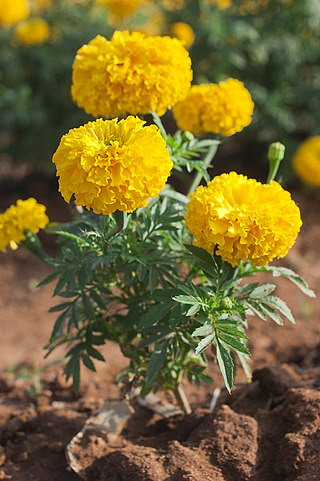
Tagetes is a genus of 50 species of annual or perennial, mostly herbaceous plants in the family Asteraceae. They are among several groups of plants known in English as marigolds. The genus Tagetes was described by Carl Linnaeus in 1753.

Christian Gottfried Daniel Nees von Esenbeck was a prolific German botanist, physician, zoologist, and natural philosopher. He was a contemporary of Goethe and was born within the lifetime of Linnaeus. He described approximately 7,000 plant species. His last official act as president of the German Academy of Natural Scientists Leopoldina was to admit Charles Darwin as a member. He was the author of numerous monographs on botany and zoology. His best-known works deal with fungi.

Mahonia is a formerly accepted genus of approximately 70 species of shrubs or, rarely, small trees with evergreen leaves in the family Berberidaceae, native to eastern Asia, the Himalaya, North America, and Central America. They are closely related to the genus Berberis and as of 2023 the majority of botanical sources list it as a synonym for Berberis.
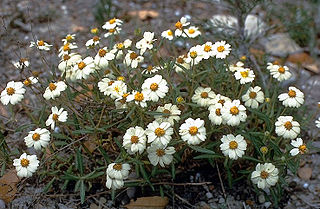
Melampodium is a genus of flowering plants in the sunflower family.

Cineraria is a genus of flowering plants in the sunflower family, native primarily to southern Africa with a few species farther north. The genus includes herbaceous plants and small subshrubs.
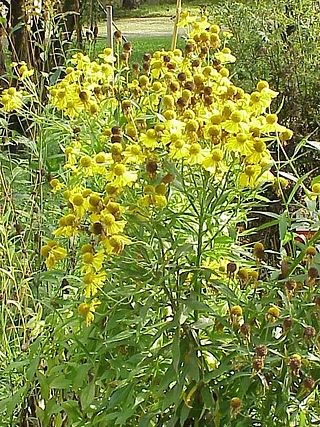
Helenium is a genus of annuals and herbaceous perennial plants in the family Asteraceae, native to the Americas.

Gnaphalium is a genus of flowering plants in the family Asteraceae, commonly called cudweeds or (formerly) chafeweeds. They are widespread and common in temperate regions, although some are found on tropical mountains or in the subtropical regions of the world.
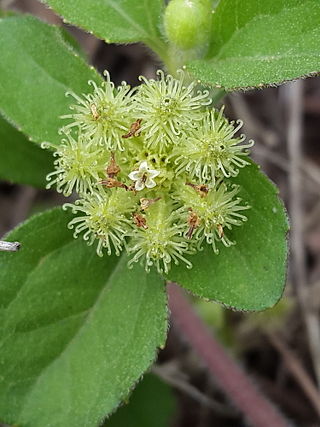
Acanthospermum australe is a South American species of herbaceous plants first described as a species in 1758.

Jungia is a genus of flowering plants in the family Asteraceae. It is native mostly to South America, with one widespread species extending its range into Central America and southern Mexico.

Tithonia is a genus of flowering plants in the tribe Heliantheae within the family Asteraceae.

Senecio crassiflorus, in Portuguese: margarida-das-dunas, one of the native South American Senecio and an herbaceous dune dwelling perennial.

Rostraria is a genus of plants in the grass family, native primarily to Eurasia and North Africa with one species native to South America. Hairgrass is a common name.

Periballia is a genus of Mediterranean plants in the grass family.
Limnas is a genus of Asian plants in the grass family. It is found in northern and central Asia.
Amphiglossa is a genus of flowering plants in the family Asteraceae, described as a genus in 1838. It includes ten species native to Namibia and the Cape Provinces of South Africa.
Sphenopus, is a genus of Asian and Mediterranean plants in the grass family.
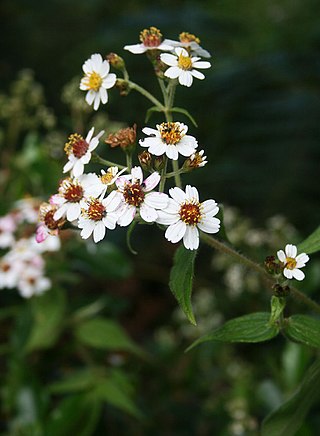
Alloispermum is a genus of flowering plants in the family Asteraceae described as a genus in 1807.
Perdicium is a genus of plants in the tribe Mutisieae within the family Asteraceae. It includes two species native to the Cape Provinces of South Africa.
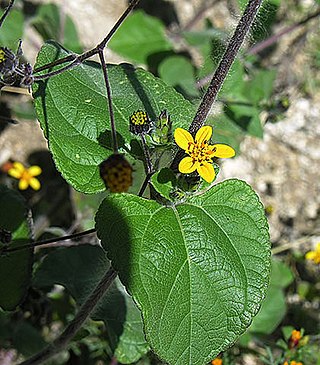
Baltimora is a genus of flowering plants in the family Asteraceae.

Acanthospermum glabratum, known as creeping starbur, is a species of flowering plant in the family Asteraceae native to southeastern Brazil.















